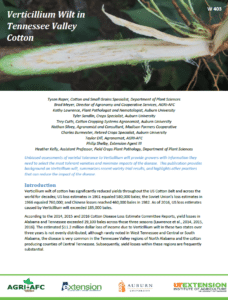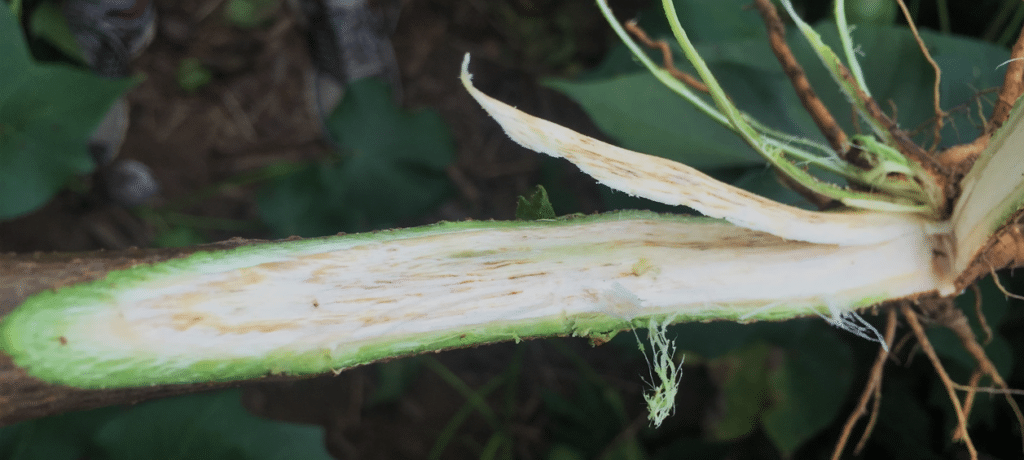The new publication, “W 403: Verticillium Wilt in Tennessee Valley Cotton” provides background on Verticillium wilt, summarizes recent variety trial results, and highlights other practices that can reduce the impact of the disease.
- Tyson Raper, Cotton and Small Grains Specialist, Department of Plant Sciences
- Brad Meyer, Director of Agronomy and Cooperative Services, AGRI-AFC
- Kathy Lawrence, Plant Pathologist and Nematologist, Auburn University
- Tyler Sandlin, Crops Specialist, Auburn University
- Trey Cutts, Cotton Cropping Systems Agronomist, Auburn University
- Nathan Silvey, Agronomist and Consultant, Madison Farmers Cooperative
- Charles Burmester, Retired Crops Specialist, Auburn University
- Taylor Dill, Agronomist, AGRI-AFC
- Philip Shelby, Extension Agent III
- Heather Kelly, Assistant Professor, Field Crops Plant Pathology, Department of Plant Sciences
Verticillium wilt of cotton has significantly reduced yields throughout the US Cotton Belt for decades. Although the disease is relatively rare in West Tennessee, the disease is common in Central Tennessee and North Alabama. According to the 2014, 2015 and 2016 Cotton Disease Loss Estimate Committee Reports, yield losses in Alabama and Tennessee exceeded 29,100 bales across those three seasons.
Although crop rotation, proper irrigation management, planting on raised beds and reducing crop residue on the soil surface can reduce disease inoculum in the soil, the most cost effective method to minimize potential impacts of the disease on cotton is to select varieties which display low levels of infection, low visual severity ratings, and high yield potentials on farms with a history of Verticillium wilt.
Several agronomists from AGRI-AFC and scientists at Auburn University began conducting variety trials in fields with Verticillium wilt roughly ten years ago in order generate variety selection information for farms with a history of Verticillium wilt. Beginning in 2015, the University of Tennessee became involved in the project.
 The new publication, “W 403: Verticillium Wilt in Tennessee Valley Cotton” provides background on Verticillium wilt, summarizes recent variety trial results, and highlights other practices that can reduce the impact of the disease.
The new publication, “W 403: Verticillium Wilt in Tennessee Valley Cotton” provides background on Verticillium wilt, summarizes recent variety trial results, and highlights other practices that can reduce the impact of the disease.
Many thanks to the producers who participated in these studies and our many collaborators on this project.


